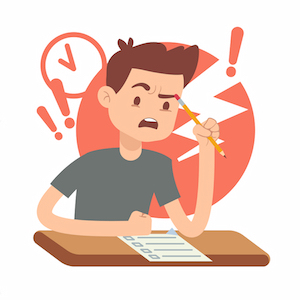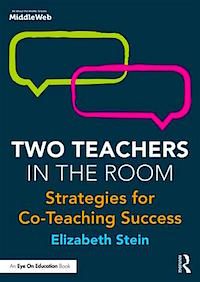Boost Your Motivation as the School Year Ends
A MiddleWeb Blog
 So in these final days and weeks of school, what is the first thing that comes to mind? Pause for a second to really think about it…visualize it…and come back to read the rest!
So in these final days and weeks of school, what is the first thing that comes to mind? Pause for a second to really think about it…visualize it…and come back to read the rest!
For me? It’s the concept of motivation. That has been the theme that emerged through my collaborations with teachers across the nation over the past few weeks. How can we motivate our students when they have checked out of learning?
In all honesty, my first response becomes: Before we motivate our students, we must be motivated ourselves! This post is dedicated to co-teachers everywhere who just need an end-of-the-school-year boost! So, let’s get motivated!
At this point in the year, it’s easy to fall into the mindset cycle of…oh, just let me get through another day. As we see the light at the end of another school year, it’s easy to just hang in and keep trying to get the job done. But we always have a choice. Why not choose to conclude this year with a new-found burst of energy that you, your co-teacher, and your students will benefit from!
Here are my Three Tips for a motivating end of the year:
Take Charge – on an Intrinsically Empowering Level
Turn any moment into a moment of gratitude. We know, things do not always go the way we would like them to go. We also know that other people (maybe even your co-teachers!) do things that can really irk us!
But rather than staying stuck in a spin of frustration, re-channel your thoughts to something that moves you through a process of realizing you can only control your responses to situations. You cannot control someone else’s behaviors or attitudes. But you are definitely in charge of yours!
Transition any frustration into one thing that you can DO to respond to the situation. Sometimes it is an active, visible step. And sometimes it is just about taking a deep breath, letting it go…and moving on. Whatever it is – you can do this!
Be Grateful
When we focus on what we are grateful for, it’s hard not to be motivated by the thoughts and images we call to mind. Start each work day thinking about what you are grateful for – and notice your emotional transition that moves your attention to more meaningful action steps that will benefit you, your co-teacher, and your students.
Even in the most frustrating of times, there is always something to be thankful for. Tap into that and notice how your own attitude changes for the better. When we stay in the place of frustration – rather than gratitude – we bring that into the classroom. And it is simply not what our students need or deserve.
That’s not to say we can’t and won’t feel frustrated. Just notice whether you are staying that way. Are you letting those negative feelings to rule your day – or are you allowing yourself to move forward and do something about it in a meaningful way? Your students will feel whichever attitude you choose to bring to the classroom – frustrating attitude or gratitude? You can do this!
Guiding Students Intrinsically
I have noticed an increase in teachers using apps that boast they will increase student motivation. And on the surface, a teacher can get fooled into thinking it is true.
Take this scenario, for example, involving those apps that “award” things. As the teacher works to balance whole class, small group, and individual student activities during an English lesson, the SMARTboard screen displays the class roster.
In the midst of students working, a beeping sound can be heard. Some students ignore it because they are immersed in the reading and writing lesson. Yet many students jolt up with a hopeful smile that quickly turns into a frown as they see the beeping sound was not meant for them. So, they diligently get back to work, hoping the next beep will indicate that they earned a point.

Is this student working because he’s motivated by learning about the content and himself as a reader and writer? No. He is focused on the extrinsic conditions, and those conditions are actually getting in the way of his connecting with the content and raising his awareness of his learning abilities.
I think extrinsic modes of motivating students really serve to motivate the teachers – because it helps them to manage the class on a surface level. Is that what you want to do? Ask yourself, are you managing real learning – or just managing the clock?

Remember, every decision we make affects our students – especially our decisions about our personal attitudes and classroom motivating techniques.
So…what’s on your mind? What are you grateful for – and how can you bring this into a cycle of intrinsic motivation within your classroom?
__________________________________________




































